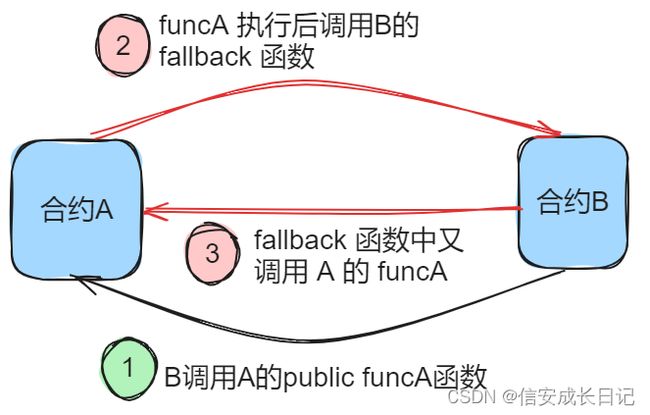- 如何在Python中使用Etherscan API进行以太坊数据查询
scaFHIO
python开发语言
Etherscan是领先的区块链浏览器、搜索、API和分析平台,专注于以太坊——一个去中心化的智能合约平台。在本篇文章中,我们将介绍如何在Python中使用EtherscanAPI进行以太坊数据查询,并提供详细的代码示例。1.技术背景介绍Etherscan提供了丰富的API接口,允许开发者查询以太坊网络上的各种数据,包括交易、账户、合约等信息。使用这些API接口,开发者可以方便地集成以太坊数据到自
- 解锁未来:深入探索去中心化应用程序(DApps)的潜力与挑战
引言近年来,随着区块链技术的迅猛发展,去中心化应用程序(DApps)逐渐成为业界关注的焦点。那么,什么是DApps?它们如何工作?又能为我们的生活和工作带来哪些影响和改变?本文将深入探讨去中心化应用程序的基本概念、特点、工作原理及其应用场景,帮助读者全面了解这一新兴的技术及其未来潜力。去中心化应用程序(DApps)的基本概念去中心化应用程序(DApps,DecentralizedApplicati
- 区块链前沿技术深度洞察:开启数字信任新时代
在当今数字化浪潮中,区块链技术作为一项具有颠覆性潜力的创新,正持续演进并突破传统边界。从金融领域的革新到供应链管理的优化,从数字身份认证的重塑到去中心化应用的蓬勃兴起,区块链的影响力已渗透到众多行业和生活场景之中,而其技术进展更是为这一领域注入了源源不断的活力与机遇。一、可扩展性突破:分片与Layer2解决方案随着区块链应用的日益广泛,可扩展性成为亟待解决的关键问题。分片技术作为以太坊2.0的核心
- 快速入门Web3开发的多个基础知识和如何进行链上开发
算了吧吧吧
web3区块链
最近我开始远程办公,因此有更多的空闲时间,打算开始进行一些区块链上数据分析的工作。然而,由于对web3的了解并不深入,我需要一些帮助来更好地理解相关知识。当然,所谓的“入门”只是一个开始,之后还有很多内容需要学习。对许多人来说,进入web3世界并不难,难的是找到正确的学习方向和路径。在网上可以找到的教程差别比较大,现有的资源零零散散,缺乏系统化的学习路径,有些内容其实现在有更好的解决方案,比如So
- 一文盘点 2025 年七大 DeFi 质押平台:如何最大化 DeFi 质押收益?
TechubNews
区块链人工智能web3
撰文:SiddhantKejriwal编译:Glendon,TechubNews加密货币行业发展至今,质押已成为其不可或缺的基石,在网络安全及投资者参与度方面发挥着重要的作用。通过参与质押,个人不仅能为区块链网络的稳定运行贡献力量,还能解锁获取被动收入的机会。具体而言,参与质押带来的好处包括:1.强化加密经济安全:从本质上讲,质押涉及锁定一定数量的加密货币以支持区块链网络的运行。这一过程对于权益证
- remix中为什么Dev -Ganache Provider没有了; remix中区块链常见的链接方式有哪些
ZhangJiQun&MXP
教学2021区块链2021论文区块链智能合约语言模型人工智能自然语言处理深度学习
remix中区块链常见的链接方式有哪些目录remix中区块链常见的链接方式有哪些remix中为什么Dev-GanacheProvider没有了Custom-ExternalHttpProvider:自定义外部HTTP提供者,允许用户连接到自定义的外部HTTP节点,可用于连接到自己搭建的区块链节点或第三方提供的节点服务,有较大灵活性,能满足不同网络环境和特定需求。RemixVM(Cancun):Re
- 区块链上的“SQL”
趣链科技
SQL编译
导读《F1:ADistributedSQLDatabaseThatScales》是Google构建的用于支持广告业务的分布式关系型数据库系统。作为一个混合型数据库系统,它结合了高可用、NoSQL数据库的扩展性以及传统SQL数据库的一致性和可用性。F1数据库整体基于GoogleSpanner构建,Spanner主要为上层的F1提供了跨数据中心的数据复制功能和一致性保证。而F1通过使用结构化数据分层架
- 区块链前线@2019.2.16
CryptoZen
区块链
落地实践:1.挪威推行原生加密货币作为其区块链智慧城市平台的唯一货币;2.美国食品和药物管理局FDA期望通过区块链技术提高药品供应链的安全;3.计划于今年夏季启动的莫斯科区块链创新基地目前需要一个知识产权评估机制;4.一份新的报告指出到2024年,基于区块链的全球能源公用事业市场将增长60%;5.阿根廷向巴拉圭出口农用化学品,接受比特币付款;6.现代汽车子公司与IBM合作,利用区块链技术改造其业务
- 云计算、大数据、人工智能、物联网、虚拟现实技术、区块链技术
2301_79098963
程序员云计算大数据人工智能
物联网一、物联网的基本概念二、物联网的特征(一)物体感知(二)信息传输(三)智能处理三、物联网关键技术(一)射频识别技术(二)产品电子编码(三)短距离通信技术(四)互联网(五)感知控制技术(六)无线网络技术(七)中间件技术(八)智能处理技术四、物联网的应用领域虚拟现实技术一、VR的基本概念二、VR的特征(一)沉浸性(二)人交互性(三)多感知性(四)想象性(五)自主性三、VR的技术应用(一)在影视娱
- 区块链Arbitrum主网节点搭建
MQLYES
区块链区块链
文章目录0.前言1.区块数据镜像下载2.执行docker命令问题0.前言本文是按照官方参考资料基于docker的方式成功搭建arbitrum主网节点。官方文档地址https://docs.arbitrum.io/run-arbitrum-node/run-full-node1.区块数据镜像下载因为区块镜像数据比较大,强烈建议先把镜像下载下来,采用本地初始化的方式同步历史数据。新建文件夹用于存储区块
- HTML语言的区块链
沈韡蕙
包罗万象golang开发语言后端
区块链技术的崛起与发展区块链是一种新兴的技术,它以其独特的去中心化、透明性和不可篡改性,正在全球范围内改变许多行业的游戏规则。在这篇文章中,我们将深入探讨区块链的基本概念、技术原理、应用场景以及未来的发展趋势。一、区块链的基本概念区块链,顾名思义,是一个由区块(Block)和链(Chain)组成的数据结构。每个区块中包含了一组交易记录,而这些区块通过加密算法和时间戳相互连接,形成一条连续的链条。这
- python 读取各类文件格式的文本信息:doc,html,mht,excel
北房有佳人
手写功能python读取doc文档python读取mhtpython读取excelpython读取html
引言众所周知,python最强大的地方在于,python社区汇总拥有丰富的第三方库,开源的特性,使得有越来越多的技术开发者来完善python的完美性。未来人工智能,大数据方向,区块链的识别和进阶都将以python为中心来展开。咳咳咳!好像有点打广告的嫌疑了。当前互联网信息共享时代,最重要的是什么?是数据。最有价值的是什么?是数据。最能直观体现技术水平的是什么?还是数据。所以,今天我们要分享的是:如
- 区块链账户的概念与安全管理
阿湯哥
区块链
区块链账户的概念与安全管理区块链中的账户与传统金融账户有本质区别,其核心是基于密码学的非对称加密体系,通过公私钥对实现去中心化身份验证与资产控制。以下从账户本质、创建方法及安全防护三方面详细解析:一、区块链账户的本质1.账户的核心要素公钥(PublicKey):公开的账户地址(如以太坊的0x...),用于接收资产或验证签名。私钥(PrivateKey):绝密的控制凭证(如64位十六进制字符串),用
- 区块链的交易管理和共识机制
阿湯哥
区块链
区块链的交易管理和共识机制是其核心功能,以下为你详细介绍它们的实现方式:交易管理的实现交易发起•用户使用钱包软件创建一笔交易,该交易包含发送方地址、接收方地址、转账金额等关键信息。同时,发送方会使用自己的私钥对交易进行数字签名,以证明交易的真实性和发送方的身份。例如,在比特币交易中,用户在比特币钱包中输入收款方的比特币地址和转账金额,钱包软件会自动生成数字签名。交易传播•签名后的交易被广播到区块链
- FISCO BCOS平台的用户权限控制与分类管理
纸鸢666
联盟链区块链联盟链FISCOBCOS
简介在区块链技术日益广泛应用的今天,如何管理与控制不同用户的权限,确保系统的安全性与高效性,成为了区块链平台不可忽视的一部分。FISCOBCOS作为一款高效的联盟链平台,通过细粒度的权限控制机制,提供了对不同用户权限的有效管理。本文将深入探讨FISCOBCOS如何实现用户的权限控制,并对不同用户进行分类与权限管理。1.账户权限控制FISCOBCOS平台通过控制台提供账户生成脚本get_accoun
- 企业安全建设——安全防线框架建设(一)
网安墨雨
安全
前言为什么会有此篇文章,早期的攻击,从弱口令,SQL注入,上传漏洞,演变到现在的反序列化,供应链,公私云,区块链等攻击方式,早期的防御方式从防火墙,防病毒,入侵检测,演变到现在的威胁情报,态势感知,各类风控系统,智能分析,我们的防御手段也随着攻击方式逐渐更新换代,笔者站在自己仅有的知识体系框架下说出自己的企业安全建设蓝图,我们的安全防线不能只是单独的一层,比如我们在网络层与传输层不能仅仅依靠防火墙
- 区块链中的数字签名:安全性与可信度的核心
Linke-
区块链区块链密码学
数字签名是区块链技术的信任基石,它像区块链世界的身份证和防伪标签,确保每一笔交易的真实性、完整性和不可抵赖性。本文会用通俗的语言,带你彻底搞懂区块链中的数字签名!文章目录1.数字签名是什么?从现实世界到区块链现实中的签名vs区块链中的签名核心三要素2.数字签名如何工作?手把手拆解流程场景模拟第一步:生成签名(小明操作)第二步:验证签名(矿工操作)文字版流程图描述3.区块链为什么离不开它?四大核心作
- GAEA的技术架构与系统集成 撸空投
空投小白
人工智能区块链去中心化ai网络
为构建AI情感数据层,GAEA整合了DePIN网络、GODHOODID和情感坐标系三大核心组件,有效、安全地整合用户数据,确保数据处理透明、高效、去中心化。架构如下:DePIN网络:这种去中心化基础设施为安全数据传输和存储提供了强大的解决方案,确保了用户数据的安全性、隐私性和完整性。通过利用基于区块链的协议,DePIN网络可确保数据不会被篡改,并能抵御集中化风险。GODHOODID:作为情绪坐标系
- web3是什么,最简单的介绍
Cliproxy海外住宅代理
网络协议网络
Web3是指第三代互联网技术,也被称为分布式互联网。它是在传统互联网(Web2.0)基础上发展出来的一种新技术体系,旨在通过区块链技术来重新定义人们访问和使用网络服务的方式。以下是关于Web3的详细介绍:一、核心特点去中心化:Web3强调去中心化,数据和服务不再由单一的企业或组织控制,而是通过去中心化的网络来分布和存储。区块链技术使得交易和数据能够在多个节点之间分布,而不是依赖中央服务器。区块链技
- Ada语言的区块链
沈韡蕙
包罗万象golang开发语言后端
Ada语言与区块链技术的结合引言在当今数字化迅速发展的时代,区块链技术因其去中心化、安全性和透明性等特性而备受关注。与此同时,Ada语言作为一种具有强大类型系统和安全保证的编程语言,也在软件开发领域逐渐崭露头角。两个看似不同的领域,随着技术的不断发展和融合,展现出了新的可能性。本文将探讨Ada语言在区块链技术开发中的应用、优势以及未来的发展前景。Ada语言简介Ada语言是一种由美国国防部在20世纪
- Perl语言的区块链
沈韡蕙
包罗万象golang开发语言后端
Perl语言在区块链技术中的应用引言随着区块链技术的迅猛发展,越来越多的编程语言开始在这个领域中发挥重要作用。虽然常见的区块链开发语言例如Solidity和JavaScript广受欢迎,但Perl作为一门成熟且灵活的语言,也在一些特定的应用场景中展现出其独特的优势。本文将探讨Perl语言在区块链技术中的应用,包括其特点、在区块链中的实现、案例分析以及未来展望。Perl语言的特点Perl是一种强大的
- 数智时代下,值得关注的大技术趋势
人工智能爱好者
人工智能大数据大数据技术趋势
(1)区块链将得到更广泛的应用。区块链是一种每一个人都能够分享和访问的电子分类账,交易的双方可通过区块链来跟踪交易记录。区块链这个词在整个2017年都备受大家关注,这是因为加密货币比特币采用了一个分散式区块链来跟踪它的所有交易记录,然而区块链技术的应用范围远不限于比特币,它还有更广泛的应用范围。有些人希望将区块链技术能够应用在病历记录上,病人的病史可通过不同的数据库和软件集中导入一个加密数据库。这
- Web3 的虚实融合之路:从虚拟交互到元宇宙构建
dingzd95
web3web3交互
在这个数字技术日新月异的时代,我们正站在Web3的门槛上,见证着互联网的又一次革命。Web3不仅仅是技术的迭代,它代表了一种全新的交互方式和价值创造模式。本文将探讨Web3如何推动虚拟交互的发展,并最终实现元宇宙的构建,揭示这一技术演进背后的关键理念与现实意义。Web3:去中心化的新交互方式Web3,即第三代互联网,是一个去中心化、用户主权、数据自主的网络环境。它依托于区块链、分布式存储等技术,实
- AI前端开发:与新技术融合,重塑职业发展之路
前端
近年来,人工智能(AI)技术飞速发展,深刻地改变着各个行业,前端开发领域也不例外。AI写代码工具的兴起,为前端开发者带来了前所未有的机遇和挑战。本文将探讨AI前端开发与其他技术的融合,分析其对职业发展的影响,并以ScriptEcho为例,解读AI如何赋能前端开发。AI前端开发与其他技术的融合:机遇与挑战并存AI前端开发并非孤立存在,它与低代码/无代码平台、区块链技术、Web3.0、元宇宙等新兴技术
- APL语言的区块链
沈清韵
包罗万象golang开发语言后端
APL语言的区块链:探索未来的分布式计算在近年来,区块链技术逐渐成为科技和金融领域的一个热门话题。它不仅在加密货币领域掀起了波澜,还被应用于供应链管理、智能合约、身份验证等多个方面。而在这场技术革命的背后,编程语言的选择也显得尤为重要。APL(AProgrammingLanguage)作为一种鲜为人知的编程语言,在区块链的构建中展现出了独特的潜力。本文将深入探讨APL语言在区块链技术中的应用及其优
- COBOL语言的区块链
韦慕霖
包罗万象golang开发语言后端
COBOL语言与区块链技术的结合引言在当今数字化迅猛发展的时代,区块链技术作为一种去中心化的分布式账本技术,正在改变各行各业的运作方式。然而,尽管区块链技术的发展势头强劲,很多企业仍依赖于老旧的系统,这些系统大多数使用COBOL语言编写。COBOL(CommonBusinessOrientedLanguage)是一种专门为商业数据处理而设计的编程语言,虽然历史悠久,但在金融、保险等领域依然被广泛使
- Logo语言的区块链
韦慕霖
包罗万象golang开发语言后端
Logo语言与区块链:一种新的编程哲学引言在当今数字化的时代,区块链技术逐渐渗透到各个行业,改变了我们处理数据和进行交易的方式。在这股浪潮中,编程语言的选择至关重要。而Logo语言,这一诞生于20世纪60年代的编程语言,以其独特的设计理念和教育目的,可能会在区块链的开发中发挥意想不到的作用。本文将探讨Logo语言的基本特征、区块链技术的核心概念以及二者结合的潜力。一、Logo语言简介1.1Logo
- TypeScript语言的区块链
韦慕霖
包罗万象golang开发语言后端
TypeScript与区块链:重塑去中心化应用的未来区块链技术自其诞生以来,便因其去中心化、安全及透明等特性而备受关注。随着越来越多的企业和开发者加入到这一趋势中,各种编程语言也开始逐渐应用于区块链技术的开发中。其中,TypeScript以其静态类型和强大的工具支持,成为了构建区块链应用的热门选择。本文将通过介绍TypeScript的特点、区块链的基本原理以及它们的结合,探讨如何用TypeScri
- 公有链、私有链、联盟链的区别及架构
A&long@2020
杂谈区块链
区块链分类“公有链”(Publicblockchain)公有链上的各个节点可以自由加入和退出网络,并参加链上数据的读写,读写时以扁平的拓扑结构互联互通,网络中不存在任何中心化的服务端节点。“私有链”(Privateblockchain)私有链中各个节点的写入权限收归内部控制,而读取权限可视需求有选择性地对外开放。专有链仍热具备区块链多节点运行的通用结构,适用于特定机构的内部数据管理与审计。“联盟链
- 开发和部署 Tezos 智能合约
pxr007
Tezos是最古老的智能合约区块链之一,以太坊是第一个。虽然以太坊是开发人员开发和部署智能合约的热门选择,但由于费用高且交易缓慢,其应用程序的可扩展性并不高。相比之下,Tezos应用程序的设置非常高效且成本低廉。在本指南中,您将学习如何使用SmartPyCLI在Tezos中开发和部署智能合约。我们将涵盖:什么是特所思?Tezos与以太坊:比较图表什么是SmartPy?什么是智能合约?SmartPy
- scala的option和some
矮蛋蛋
编程scala
原文地址:
http://blog.sina.com.cn/s/blog_68af3f090100qkt8.html
对于学习 Scala 的 Java™ 开发人员来说,对象是一个比较自然、简单的入口点。在 本系列 前几期文章中,我介绍了 Scala 中一些面向对象的编程方法,这些方法实际上与 Java 编程的区别不是很大。我还向您展示了 Scala 如何重新应用传统的面向对象概念,找到其缺点
- NullPointerException
Cb123456
androidBaseAdapter
java.lang.NullPointerException: Attempt to invoke virtual method 'int android.view.View.getImportantForAccessibility()' on a null object reference
出现以上异常.然后就在baidu上
- PHP使用文件和目录
天子之骄
php文件和目录读取和写入php验证文件php锁定文件
PHP使用文件和目录
1.使用include()包含文件
(1):使用include()从一个被包含文档返回一个值
(2):在控制结构中使用include()
include_once()函数需要一个包含文件的路径,此外,第一次调用它的情况和include()一样,如果在脚本执行中再次对同一个文件调用,那么这个文件不会再次包含。
在php.ini文件中设置
- SQL SELECT DISTINCT 语句
何必如此
sql
SELECT DISTINCT 语句用于返回唯一不同的值。
SQL SELECT DISTINCT 语句
在表中,一个列可能会包含多个重复值,有时您也许希望仅仅列出不同(distinct)的值。
DISTINCT 关键词用于返回唯一不同的值。
SQL SELECT DISTINCT 语法
SELECT DISTINCT column_name,column_name
F
- java冒泡排序
3213213333332132
java冒泡排序
package com.algorithm;
/**
* @Description 冒泡
* @author FuJianyong
* 2015-1-22上午09:58:39
*/
public class MaoPao {
public static void main(String[] args) {
int[] mao = {17,50,26,18,9,10
- struts2.18 +json,struts2-json-plugin-2.1.8.1.jar配置及问题!
7454103
DAOspringAjaxjsonqq
struts2.18 出来有段时间了! (貌似是 稳定版)
闲时研究下下! 貌似 sruts2 搭配 json 做 ajax 很吃香!
实践了下下! 不当之处请绕过! 呵呵
网上一大堆 struts2+json 不过大多的json 插件 都是 jsonplugin.34.jar
strut
- struts2 数据标签说明
darkranger
jspbeanstrutsservletScheme
数据标签主要用于提供各种数据访问相关的功能,包括显示一个Action里的属性,以及生成国际化输出等功能
数据标签主要包括:
action :该标签用于在JSP页面中直接调用一个Action,通过指定executeResult参数,还可将该Action的处理结果包含到本页面来。
bean :该标签用于创建一个javabean实例。如果指定了id属性,则可以将创建的javabean实例放入Sta
- 链表.简单的链表节点构建
aijuans
编程技巧
/*编程环境WIN-TC*/ #include "stdio.h" #include "conio.h"
#define NODE(name, key_word, help) \ Node name[1]={{NULL, NULL, NULL, key_word, help}}
typedef struct node { &nbs
- tomcat下jndi的三种配置方式
avords
tomcat
jndi(Java Naming and Directory Interface,Java命名和目录接口)是一组在Java应用中访问命名和目录服务的API。命名服务将名称和对象联系起来,使得我们可以用名称
访问对象。目录服务是一种命名服务,在这种服务里,对象不但有名称,还有属性。
tomcat配置
- 关于敏捷的一些想法
houxinyou
敏捷
从网上看到这样一句话:“敏捷开发的最重要目标就是:满足用户多变的需求,说白了就是最大程度的让客户满意。”
感觉表达的不太清楚。
感觉容易被人误解的地方主要在“用户多变的需求”上。
第一种多变,实际上就是没有从根本上了解了用户的需求。用户的需求实际是稳定的,只是比较多,也比较混乱,用户一般只能了解自己的那一小部分,所以没有用户能清楚的表达出整体需求。而由于各种条件的,用户表达自己那一部分时也有
- 富养还是穷养,决定孩子的一生
bijian1013
教育人生
是什么决定孩子未来物质能否丰盛?为什么说寒门很难出贵子,三代才能出贵族?真的是父母必须有钱,才能大概率保证孩子未来富有吗?-----作者:@李雪爱与自由
事实并非由物质决定,而是由心灵决定。一朋友富有而且修养气质很好,兄弟姐妹也都如此。她的童年时代,物质上大家都很贫乏,但妈妈总是保持生活中的美感,时不时给孩子们带回一些美好小玩意,从来不对孩子传递生活艰辛、金钱来之不易、要懂得珍惜
- oracle 日期时间格式转化
征客丶
oracle
oracle 系统时间有 SYSDATE 与 SYSTIMESTAMP;
SYSDATE:不支持毫秒,取的是系统时间;
SYSTIMESTAMP:支持毫秒,日期,时间是给时区转换的,秒和毫秒是取的系统的。
日期转字符窜:
一、不取毫秒:
TO_CHAR(SYSDATE, 'YYYY-MM-DD HH24:MI:SS')
简要说明,
YYYY 年
MM 月
- 【Scala六】分析Spark源代码总结的Scala语法四
bit1129
scala
1. apply语法
FileShuffleBlockManager中定义的类ShuffleFileGroup,定义:
private class ShuffleFileGroup(val shuffleId: Int, val fileId: Int, val files: Array[File]) {
...
def apply(bucketId
- Erlang中有意思的bug
bookjovi
erlang
代码中常有一些很搞笑的bug,如下面的一行代码被调用两次(Erlang beam)
commit f667e4a47b07b07ed035073b94d699ff5fe0ba9b
Author: Jovi Zhang <bookjovi@gmail.com>
Date: Fri Dec 2 16:19:22 2011 +0100
erts:
- 移位打印10进制数转16进制-2008-08-18
ljy325
java基础
/**
* Description 移位打印10进制的16进制形式
* Creation Date 15-08-2008 9:00
* @author 卢俊宇
* @version 1.0
*
*/
public class PrintHex {
// 备选字符
static final char di
- 读《研磨设计模式》-代码笔记-组合模式
bylijinnan
java设计模式
声明: 本文只为方便我个人查阅和理解,详细的分析以及源代码请移步 原作者的博客http://chjavach.iteye.com/
import java.util.ArrayList;
import java.util.List;
abstract class Component {
public abstract void printStruct(Str
- 利用cmd命令将.class文件打包成jar
chenyu19891124
cmdjar
cmd命令打jar是如下实现:
在运行里输入cmd,利用cmd命令进入到本地的工作盘符。(如我的是D盘下的文件有此路径 D:\workspace\prpall\WEB-INF\classes)
现在是想把D:\workspace\prpall\WEB-INF\classes路径下所有的文件打包成prpall.jar。然后继续如下操作:
cd D: 回车
cd workspace/prpal
- [原创]JWFD v0.96 工作流系统二次开发包 for Eclipse 简要说明
comsci
eclipse设计模式算法工作swing
JWFD v0.96 工作流系统二次开发包 for Eclipse 简要说明
&nb
- SecureCRT右键粘贴的设置
daizj
secureCRT右键粘贴
一般都习惯鼠标右键自动粘贴的功能,对于SecureCRT6.7.5 ,这个功能也已经是默认配置了。
老版本的SecureCRT其实也有这个功能,只是不是默认设置,很多人不知道罢了。
菜单:
Options->Global Options ...->Terminal
右边有个Mouse的选项块。
Copy on Select
Paste on Right/Middle
- Linux 软链接和硬链接
dongwei_6688
linux
1.Linux链接概念Linux链接分两种,一种被称为硬链接(Hard Link),另一种被称为符号链接(Symbolic Link)。默认情况下,ln命令产生硬链接。
【硬连接】硬连接指通过索引节点来进行连接。在Linux的文件系统中,保存在磁盘分区中的文件不管是什么类型都给它分配一个编号,称为索引节点号(Inode Index)。在Linux中,多个文件名指向同一索引节点是存在的。一般这种连
- DIV底部自适应
dcj3sjt126com
JavaScript
<!DOCTYPE html PUBLIC "-//W3C//DTD XHTML 1.0 Transitional//EN" "http://www.w3.org/TR/xhtml1/DTD/xhtml1-transitional.dtd">
<html xmlns="http://www.w3.org/1999/xhtml&q
- Centos6.5使用yum安装mysql——快速上手必备
dcj3sjt126com
mysql
第1步、yum安装mysql
[root@stonex ~]# yum -y install mysql-server
安装结果:
Installed:
mysql-server.x86_64 0:5.1.73-3.el6_5 &nb
- 如何调试JDK源码
frank1234
jdk
相信各位小伙伴们跟我一样,想通过JDK源码来学习Java,比如collections包,java.util.concurrent包。
可惜的是sun提供的jdk并不能查看运行中的局部变量,需要重新编译一下rt.jar。
下面是编译jdk的具体步骤:
1.把C:\java\jdk1.6.0_26\sr
- Maximal Rectangle
hcx2013
max
Given a 2D binary matrix filled with 0's and 1's, find the largest rectangle containing all ones and return its area.
public class Solution {
public int maximalRectangle(char[][] matrix)
- Spring MVC测试框架详解——服务端测试
jinnianshilongnian
spring mvc test
随着RESTful Web Service的流行,测试对外的Service是否满足期望也变的必要的。从Spring 3.2开始Spring了Spring Web测试框架,如果版本低于3.2,请使用spring-test-mvc项目(合并到spring3.2中了)。
Spring MVC测试框架提供了对服务器端和客户端(基于RestTemplate的客户端)提供了支持。
&nbs
- Linux64位操作系统(CentOS6.6)上如何编译hadoop2.4.0
liyong0802
hadoop
一、准备编译软件
1.在官网下载jdk1.7、maven3.2.1、ant1.9.4,解压设置好环境变量就可以用。
环境变量设置如下:
(1)执行vim /etc/profile
(2)在文件尾部加入:
export JAVA_HOME=/home/spark/jdk1.7
export MAVEN_HOME=/ho
- StatusBar 字体白色
pangyulei
status
[[UIApplication sharedApplication] setStatusBarStyle:UIStatusBarStyleLightContent];
/*you'll also need to set UIViewControllerBasedStatusBarAppearance to NO in the plist file if you use this method
- 如何分析Java虚拟机死锁
sesame
javathreadoracle虚拟机jdbc
英文资料:
Thread Dump and Concurrency Locks
Thread dumps are very useful for diagnosing synchronization related problems such as deadlocks on object monitors. Ctrl-\ on Solaris/Linux or Ctrl-B
- 位运算简介及实用技巧(一):基础篇
tw_wangzhengquan
位运算
http://www.matrix67.com/blog/archives/263
去年年底写的关于位运算的日志是这个Blog里少数大受欢迎的文章之一,很多人都希望我能不断完善那篇文章。后来我看到了不少其它的资料,学习到了更多关于位运算的知识,有了重新整理位运算技巧的想法。从今天起我就开始写这一系列位运算讲解文章,与其说是原来那篇文章的follow-up,不如说是一个r
- jsearch的索引文件结构
yangshangchuan
搜索引擎jsearch全文检索信息检索word分词
jsearch是一个高性能的全文检索工具包,基于倒排索引,基于java8,类似于lucene,但更轻量级。
jsearch的索引文件结构定义如下:
1、一个词的索引由=分割的三部分组成: 第一部分是词 第二部分是这个词在多少

